For thousands of years humans have found ways to respond to the challenges of living in a frozen world of the Arctic. But even the oldest human cultures in the far north have been preceded by thousands of millennia by creatures exquisitely adapted to a realm where water, the single non-negotiable thing life requires, exists in all of its wondrous forms: as solid, gas, and liquid. Massive sheets of slowly rotating sea ice shield the heart of the Arctic -- an ocean at the top of the world where life abounds from the surface to the greatest depths more than three miles below.
On April 20, the first-ever IMAX 3D documentary about the Arctic -- To The Arctic 3D -- will premiere in theatres across the country. A co-production from MacGillivray Freeman Films, Warner Bros. Pictures and IMAX Filmed Entertainment, presented by One World One Ocean, the film is a celebration of Arctic life in its many resilient forms with intimate glimpses of our fellow mammals -- polar bears, foxes, walruses, caribou and others who share with humans a common need for water, warmth, food, shelter -- and protection from predators.
The miracle of life on Earth shines through the stories and powerful imagery shared in the film. For humans, the Arctic is a harshly inhospitable place, but the conditions there are precisely what polar bears require to survive -- and thrive. "Harsh" to us is "home" for them. Take away the ice and snow, increase the temperature by even a little, and the realm that makes their lives possible literally melts away.
Sadly, in our time, and largely by our actions, this is exactly what is happening. Owing largely to consequences of the 20th century appetite for energy derived from burning coal, oil and gas, coupled with global destruction of the natural carbon-dioxide absorbing forests of the land and plankton and other natural systems in the sea, Earth's atmosphere and ocean have been swiftly overloaded with carbon dioxide and methane. The results are visible in an unnatural acceleration of global warming, rapid shifts in climate and weather, an inexorable rise in sea level, and a relentless trend toward acidification of the ocean.
The use of fossil fuels has served us well during the past century, driving a technological revolution, increasing farm yields, and powering transportation and communication systems. But the most important gift derived from the use of fossil fuels has nothing to do with new "miracle" materials, medical breakthroughs or urban infrastructure. It has everything to do with insights gained by being able to fly high in the sky, to see the world as a tiny blue speck in an otherwise inhospitable universe, and communicate knowledge gained to everyone, everywhere.
This is the mission of One World One Ocean, an exciting new campaign that I'm proud to be a part of, which is presenting To The Arctic 3D as its inaugural film. The campaign, launched last year by award-winning To The Arctic 3D director Greg MacGillivray and his wife Barbara, is harnessing the power of media -- films, television and digital -- to inspire and connect millions worldwide in an effort to catalyze a movement to restore the world's oceans.
I've had the joy of spending thousands of hours under the sea. I wish I could take people along to see what I see, and to know what I know. That's the gift of film, to take people where they otherwise might not be able to go and to inspire them to take care of the planet that takes care of us. From awareness and knowledge, comes action.
Now we know what was impossible to grasp prior to the end of the 20th century, and now, at the beginning of the 21st using our distinctly human capacity to gather information, grasp the patterns, anticipate the outcomes, and the time-tested ability to take actions that are in our best interests. We have an edge when it comes to having a long and enduring future by knowing that we must change our ways. Polar bears and walruses cannot know why the changes are taking place, and even if they could know, they are not able to understand what to do to reverse the causes of the declines they are experiencing.
We do know why the changes are happening, and we do know what to do about it: there are limits to what we can do to the natural systems that keep us alive, no matter where on the planet we live.
Our fate is intimately linked to the natural systems that deliver the underpinnings of our economies, our security, our health and ultimately, our very lives. Now we know that the time to act is shrinking, coincident with the diminishing fabric of life on the land and in the sea -and the loss of polar ice and snow.
By celebrating the Arctic, this incredible film and the One World One Ocean campaign convey a message of urgency laced with hope. There is time, but not a lot, to shift our way of thinking and acting, to protect the Arctic as if our lives depend on it -- because they do.
Oceanographer Sylvia Earle is Explorer-in-Residence at the National Geographic Society and founder of Mission Blue. She received the TED Prize for her proposal to establish a global network of marine protected areas, or "hope spots" to save and restore "the blue heart of the planet." She is chief advisor to One World One Ocean, a global media campaign to protect the world's oceans.